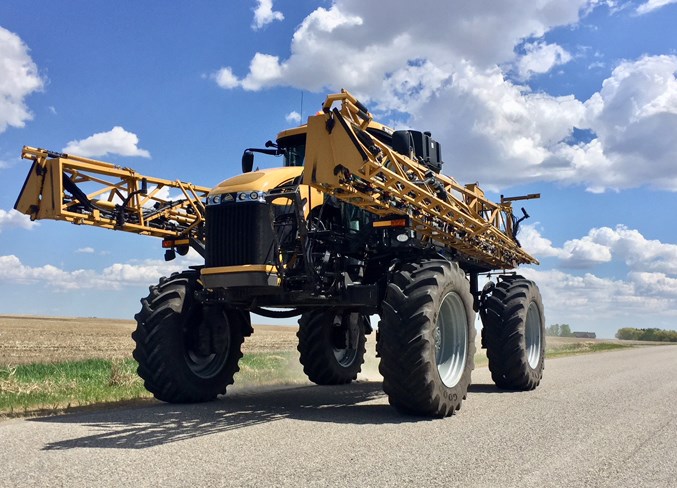When it comes to moving farm equipment on public roads, a little planning can go a long way toward preventing accidents.
“Farmers should check their route prior to transporting farm equipment to be sure their equipment will fit on all roads and bridges, and to note the locations of power lines, especially where they cross over the route or field approach,” says Nicole Hornett, farm safety specialist with Alberta Agriculture and Forestry.
“If equipment is too wide to fit safely into one lane, approaching traffic could clip the machinery or become blocked while crossing a bridge. Equipment that is too tall could come in contact with a power line. Use a pilot or escort vehicle as a guide for large machinery and to warn motorists of oncoming large equipment.”
For the safety of all motorists, it is highly recommended that farmers move equipment during high-visibility daylight hours and during periods of light traffic.
“Moving farm equipment on public roads during the least congested daylight hours helps to increase road safety and to avoid frustrations for both farmers and motorists,” she said.
“If your route takes you across a rural railway crossing, be aware that some crossings have poor visibility. Always stop and make sure the way is clear before crossing.”
Anyone moving equipment, particularly on public roads, should be trained how to operate the equipment.
“Training and orientation are essential for new operators before heading out onto the roads, as is a refresher and review of the operator’s manual for experienced operators,” she said.
“It takes time for an operator to become familiar with the speed, blind spots, large dimensions and manoeuverability limitations of farm equipment.”
As well, Hornett says it is important drivers never take extra riders on equipment.
“Extra riders on farm equipment are a distraction to the operator and are at risk of falling off the machinery and being run over. Each person in the machine should be secured with a seatbelt,” she said.
Farm machinery operators can make road travel safer for themselves and others by observing safety precautions. Travel at a speed that will allow the operator to maintain full control at all times. Slow down when making turns or rounding curves. If needed, pull over when there is a suitable area to allow backed-up traffic to pass. Make sure the area is sufficiently wide and solid enough to handle the equipment.
“Once on a public road, obey all traffic laws and signs,” she said. “Always wear your seatbelt and use signal lights when turning. Never use a cellphone while in the process of transporting equipment.
“The distracted driving law, along with all other rules of the road, is in full effect while driving farm machinery on public roads and highways.”



